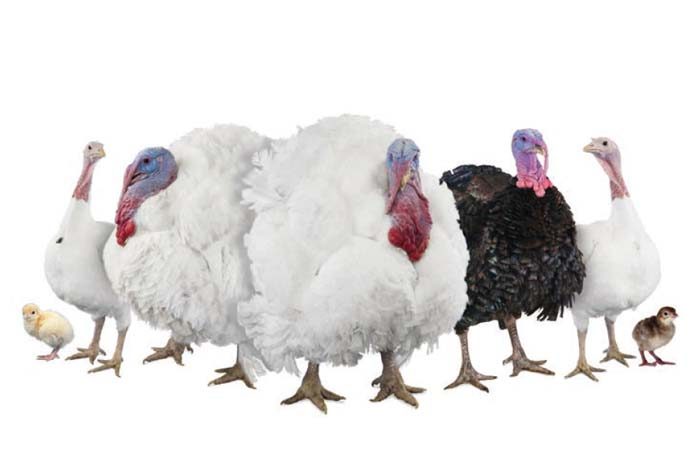
Gut health and the efficient conversion of feed into its basic components for optimal nutrient absorption is vital for both commercial and turkey breeder production and welfare.
Gut health, an intricate and complex area combining nutrition, microbiology, immunology and physiology, has a key role to play. When gut health is compromised, digestion and nutrient absorption are affected. This can have a detrimental effect on feed conversion and increase susceptibility to disease, leading to economic loss. In addition, recent changes in legislation on the use of antimicrobials, differing feed requirements and more efficient birds highlight the need for a better understanding of gut function and gut health. This article aims to explore the area of gut health and outline key factors that are important in the development and maintenance of optimal gut function.

An overview of the gut and how it works
The intestinal tract of a bird is a specialised tube that starts at the beak and ends in the cloaca. The primary function of the gut is the conversion and digestion of food into its basic components for absorption and utilisation by the bird.
The gut is separated into 5 distinct regions (Figure 1): the crop, proventriculus, gizzard, small intestine (duodenum, jejunum, and ileum), and large intestine (caeca, colon and rectum). Each of these regions has a specific role in the digestion process and absorption of nutrients. The feed enters the crop where it is stored for a short period of time and partially fermented by the resident bacteria. The feed then enters the proventriculus where is it mixed with acid and pepsin (an enzyme, which breaks down protein) and then on to the gizzard. The gizzard acts like a grinding mill to break the feed into smaller particles, it will then release the feed into the small intestine once the feed particles are small enough. Whilst the gizzard grinds the feed, it is mixed further with the acid and enzymes secreted by the proventriculus.
This process allows for the breakdown of whole proteins into smaller peptides, which can then digested in the small intestine into amino acids for absorption. Within the small intestine the carbohydrates and fats are also broken down so that they can be absorbed and used by the birds.
During the normal digestion process, by the time the digesta reaches the last part of the ileum all the proteins, fats and carbohydrates should have been absorbed leaving behind the non-digestible components of the feed (e.g. cellulose, non-starch polysaccharides etc.). This material has two fates; it is either passed out in faeces or taken up by the caeca where bacteria ferment these materials to form organic acids, short chain fatty acids and vitamins which the bird can absorb for extra nutrients. At the end of digestion turkeys will produce two types of dropping a caecal and a faecal which look very different.

Gut health research
Gut health provides for an active area of research in both human and animal science. Aviagen Turkeys is committed to gaining a better understanding of gut microbiota, gut function, and gut immunity by undertaking internal research projects and collaborating with universities to ensure the latest technologies and knowledge are adopted to improve bird gut health in the field.
Conclusions
Maintaining the balance of good gut health is a key aspect of getting the best growth and FCR out of any food producing animal. Many researchers have attempted to understand gut microbiota, gut function, and gut immunity. It is increasingly evident that the gut remains a highly complex area.
Regional variations in poultry production, management styles, climate, disease challenge, and feed raw materials add further complexity to maintaining good gut health but what is clear is that developing and maintaining gut health through good bird management practices is key to maintaining bird health, welfare, and performance.
Gut inhabitants |
The gastrointestinal tract (GIT) consists of a diverse community of mainly bacteria, fungi, protozoa, and viruses (gut microbiota). The major development of this community begins on hatching; bacteria are picked up from the environment, the feed, and the people handling the poults post-hatch. Each of these three areas can therefore affect gut microbiota development.
Maintaining the balance of gut healthMaintaining good gut health is critical for maintaining the growth, health, and welfare of the bird. If digestion and nutrient absorption is compromised an imbalance or overgrowth of the gut microbiota can occur which in turn will affect bird health and performance. |

















